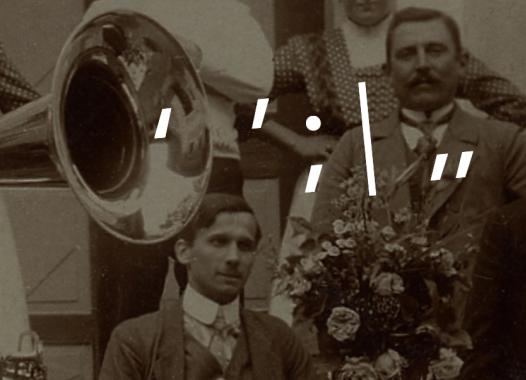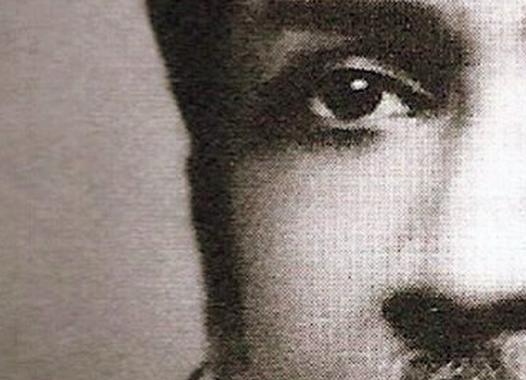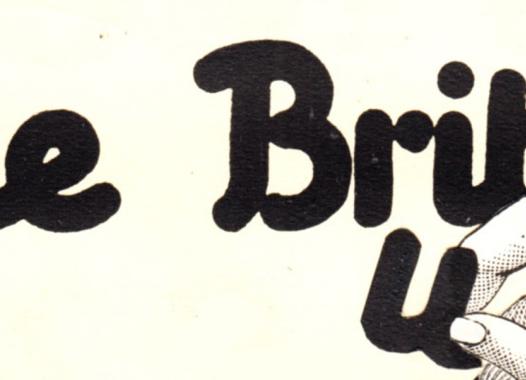
Reuven Tsur is a founder of cognitive poetics. He has spent a lifetime demonstrating the importance of “the rhythmical performance” of a poem. Where some theories of meter (both traditional and linguistic) hew a division between metrical and unmetrical lines based on a set of fixed parameters, Tsur has introduced to prosodic scholarship the machine-based analyses of the wave plot and F₀ extract of performances of actual lines to challenge so rigid and transhistorical a notion of metricality.
Tsur’s contribution connects to the theme of this Colloquy in two ways. First, the essay sketches a history of modern scholarship at the intersection of prosody and linguistics. The opening of the essay pits two published scansions of a line from Milton’s Paradise Lost against each other, and the beginning of the section entitled “Metrical/Unmetrical” tests various metrical theories against real and invented lines of pentameter, finding the theories inadequate to the complexity and interest of the poets’ actual historical practice.
Second, after considering the practical value of different theories, the essay identifies sea changes in English metrical style from Shakespeare to Shelley. The penultimate section, “A Diachronic Model,” brings the analysis into historical focus. We might be reminded of work by other contributors to this Colloquy, who have as profitably relied on other resources (i.e., the low-tech exhaustive analysis of thousands of lines) to reveal metrical change across periods or within a single poet’s career.
Tsur suggests that a reader’s rhythmical performance of complex lines (i.e., lines in which the linguistic pattern and the versification pattern diverge) may be regarded as a problem-solving activity that makes the conflicting patterns perceptible. By positing the importance of phonetic correlates, such as late peaking, duration, or glottal stops, his work expands our resources for such problem-solving, rather than making judgments of metricality through the counting and instantiation of stress accent.
Tsur argues that the extent to which intonation links meter to rhythm in mental or vocal performance has been grossly underestimated. Indeed, one may trace a direct line between his pioneering “laboratory experiments on the acoustic correlates of metrical judgment in a reader’s mind during performance”[1] and contemporary experiments with vocal deformance, which pose important disruptions to settled theories of poetry and poetics.
Poetic rhythm is a linguistic-aesthetic-psychological phenomenon. I will present the focus of my argument via a controversy regarding the first line of the following excerpt, by Milton:.[1]
1. And sat as Princes, whom the supreme King
Exalted to such power, and gave to rule,
Milton’s 1809 editor, Henry J. Todd comments on the first line of this excerpt: “I conceive that Milton also intended the last foot of the following verse to be a spondee, as more dignified and impressive than the accentuation, not uncommon indeed in our old poetry, of súpreme on the first syllable” (Todd, 1970: 199). One hundred eighty years later, Gilbert Youmans takes issue with him: “Todd is almost certainly mistaken about Milton’s intention in this case. […] Otherwise, these lines would violate one of Kiparsky’s categorical rules for Milton” (Youmans, 1989: 349-350).
The two agree about the structure of the verse line; they disagree about its performance. But they support their respective positions by reasons of different kinds. Youmans invokes metricality judgments, Todd—poetic effects. Psychologically, “the rhythmical performance” of a poem is a perceptual solution to a perceptual problem: when the linguistic and versification patterns conflict, they are accommodated in a pattern of performance, such that both are perceptible simultaneously. Youmans and Todd seek their solutions to this line within a convergent and a divergent delivery style, respectively.
Where several delivery styles are possible, one reason for choosing one rather than another may be aesthetic. Beardsley speaks of three “general canons” of evaluation: unity, complexity, and some intense human quality. The greater the complexity of an aesthetic object, or the greater its unity, other things being equal, the better it will be considered. If the reciter “accentuates súpreme on the first syllable”, straightforward unity may be greatly enhanced, but at the expense of complexity. If, however, the reciter strongly emphasizes both –preme and King, he may offer, in certain circumstances, a “rhythmical performance”, so that both unity and complexity are enhanced, relative to each other.[2] In what follows, I will explore what those “certain circumstances” are. The present assumption is that listeners decode the consecutive heavy stresses using their knowledge of the phonologic and versification features whose interaction produced their intonational signals.
Finally, when Todd defends his reading as a spondee on the grounds that it is “more dignified and impressive”, he invokes the general canon of “intense human quality”. What may “dignified” mean with reference to metric structures? It suggests that the listener may detect some structural resemblance between the consecutive heavy stresses and the outward manifestation of dignity in humans, such as weightiness, reserve of manner, and clearly articulated gestures. “Weightiness” in a context of a disyllable with its stressed syllable in a weak position, followed by another stressed syllable, suggests “having considerable mass”; in a context of dignified human behaviour it suggests “of much importance or consequence”. As to “reserve”, a stressed syllable in a weak position (followed by another stressed syllable) “holds back” the rhythmic movement of the line, whereas a dignified person “holds back”, “controls” his responses, the expression of his emotions or thoughts.[3] As to “clearly articulated gestures” in poetry, I will argue that the rhythmical performance of such constructs as a disyllable with its second, stressed, syllable in a weak position requires exceptionally clear articulation.
We do not know whether Milton or Shelley intended that such constructions as “the supreme King” be performed by inverting the stress on supreme, or by foregrounding a spondee. All we know is that there may be an optional inversion rule which, when applied, yields a convergent iambic lilt; when not—a divergent spondaic cadence. So, the latter possibility should not be ruled out, at least. The reason for the suspension of the alleged optional rule can be aesthetic: Milton and Shelley, being the paradigmatic “divergent poets”, may be more divergent in their conception of delivery style too than Pope, who is the paradigmatic convergent poet. Otherwise, the difference between Milton’s and Pope’s metric styles may be obscured. Moreover, suppose we accept the optional-inversion construal; we still have to explain why is it that Milton and Shelley do have recourse to this optional rule, but Pope doesn’t.
Though I tend to side with Todd, I am exploring here not the question “Who is right?”, but whether a performance can be imagined or secured that allows to perceive the conflicting linguistic and versification patterns at the same time.
Metrical/Unmetrical
Generative linguists search to discover the rules that can generate all the grammatical sentences, but none of the ungrammatical ones. By analogy, generative metrists search to discover the rules that can generate all the metrical lines, but none of the unmetrical ones. As we have seen above, when a stressed syllable of a polysyllable occurs in weak position, even before a stressed syllable in a strong position, Kiparsky and Youmans (and we may add Magnusson and Ryder) rule it “unmetrical”. Halle and Keyser have recourse to the theoretical construct “stress maximum”, defined as a lexically stressed syllable between two unstressed syllables, within the same syntactic and versification unit. “A gárden” contains a stress maximum, “a róck gárden” does not. All mappings of linguistic stress patterns to versification patterns are allowed, except a stress maximum in a weak position. Milton’s
2. Burnt after them to the bóttomless pit
would be unmetrical under both criteria: the word “bóttomless” contains (after “the”) a stress maximum in the seventh (weak) position, and is a polysyllable with its stressed syllable in a weak position. Halle and Keyser and their critics have found only twelve instances of stress maxima in weak positions in major English poetry. This is not very bad for a theory. But I have found over sixty instances (in Paradise Regained only I have found eighteen). The present paper is part of my lifetime project to replace the dichotomy “metrical/unmetrical” by the notion of “rhythmical performance”, defined as a performance in which the conflicting patterns of language and versification are perceived simultaneously. If a deviant line is performed rhythmically, tension is generated. If the performance is not rhythmical in the above sense, the line falls into chaos.
A great problem with English metre since the Renaissance is that nobody knows its rules. The great poets thought they were doing one thing, but did another. “Iambic pentameter” means that there is a unit that consists of an unstressed and a stressed syllable; and there are five such units in a line. In the first 165 lines of Paradise Lost there are exactly three such lines, one of them being:
3. At ónce as fár as Ángels kén he viéws
w s w s w s w s w s
All the rest deviate from this basic pattern to some degree or other. The greater the deviation, the greater the tension generated—up to a certain point; beyond that point, the verse line falls apart. Much metrical theory is devoted to an attempt to define that critical point. The trouble with all these theories is that they are “irrefutable”. Consider the following line by Donne, followed by two artificial constructs:
4. Shall behóld Gód, and néver tást Déaths wóe.
w s w s w s w s w s
5. Shall be óld Gód, and néver tást Déaths wóe.
w s w s w s w s w s
6. Shall sée óld Gód, and néver tást Déaths wóe.
w s w s w s w s w s
All prosodists would rule Excerpt 6 “metrical”; most (but not all) would rule Excerpt 5 “metrical”; as to Excerpt 4, the genuine line, some theorists would rule it metrical (e.g., Wimsatt and Beardsley; Halle and Keyser); but some unmetrical (e.g., Kiparsky; Magnusson and Ryder (1970)). According to the latter, a stressed syllable may occur in a weak position, provided that it is adjacent to a stressed syllable, and provided that it is a monosyllable, that is, no unstressed syllable of the same word occurs in a strong position. Accordingly, old in Excerpt 5 will be ruled metrical, but –hold in Excerpt 4 unmetrical. Halle and Keyser, by contrast, allow a stressed syllable in a weak position, provided that it is not a stress maximum, irrespective of word boundaries. Accordingly, both Excerpts 4 and 5 will be ruled equally metrical, since neither behold God nor be old God contain a stress maximum. Likewise, Wimsatt and Beardsley would legitimize Excerpt 4, because a performance can be secured that preserves the linguistic stress pattern without violating the iambic pattern. Paraphrasing them, “‘shall’ and ‘be-’ are so weak only because ‘-hold’ is so strong; and because ‘-hold’ is so strong, ‘God’ has to be yet stronger”. This would be a relatively “convergent” solution to a problem of divergence.
Wimsatt and Beardsley, or Halle and Keyser maintain, then, that both kinds of construction are metrical. Magnusson and Ryder admit the existence of verse lines like Excerpt 4, but these do not refute their theory, precisely because they are unmetrical. They argue that their theory is more adequate, because it distinguishes between Excerpts like 4 and 5, the former being unmetrical, the latter—metrical.
Thus, one cannot refute these metric theories by pointing out the existence of counterexamples. That is why such metric theories are irrefutable (cf. Lake: 1967). One further difficulty with such a conception is that, precisely, some of the greatest masters of musicality in English poetry, such as Milton and Shelley, have grossly violated all the limits of metricalness hitherto proposed.
A similar problem arises with my own assertion that “Supreme, in Milton’s time, was not pronounced with the stress on the first syllable; the word occurs twenty-two times in Paradise Lost, and it begins in a strong position only twice”. Youmans may admit the existence and relative frequency of such constructions as “supreme King”, but claim that Milton intended to invert the stress pattern of supreme; therefore they may not serve as counterexamples. So, I had to make my claims more modest, and acknowledge the existence of opposing delivery styles, convergent and divergent.
The problem will cease to be so hopelessly bewildering if we realize that the reference point is none of the afore-mentioned boundaries: that the paradigmatic case of iambic metre is, like Excerpt 3, a verse line in which stressed syllables occur only, and in all, strong positions. All the other iambic structures depart from this paradigmatic line to some degree or other. All poetic rhythm is accessible only through some kind of performance, mental or vocal. When the metric and linguistic stress patterns conflict, they must be accommodated in a performance pattern, through vocal or sub-vocal manipulations. In the majority of instances, these manipulations go unnoticed, because they come so naturally. The greater the deviation, the more difficult, the more noticeable, the manipulations become.
In these departures from the paradigmatic line, scales of difficulty, or of “unnaturalness” can be constructed, on which various poets and theorists may draw the utmost boundary of metricalness at different points. A similar point was made by Kiparsky: “What differentiates metrical usage (e.g., Shakespeare vs. Milton vs. Pope) is never what constitutes a mismatch, but only where the boundary between permissible and impermissible mismatches is drawn” (1977: 224). But he draws different conclusions from this.
Consider the variable “consecutive stresses”, as displayed in Excerpts 4–6. In the sequence "tast deaths woe" or "see Old God" there are three consecutive stresses; the first and third ones confirm metre, the second one disconfirms it. All prosodists find such a sequence perfectly acceptable. Consider now the sequence "be old God." Here the disconfirming stress is not symmetrically enclosed between two confirming stresses; some prosodists would rule such a construction metrical, some unmetrical. In the sequence "behold God" the disconfirming stress is part of a polysyllable that also has an unstressed syllable in a strong position, and some prosodists who would rule be old God metrical, would rule this one unmetrical. Yet, some other prosodists would rule this one metrical too. I submit that metricalness is an open concept in Wittgenstein’s sense, where—in Morris Weitz’s formulation (1962: 54), “a situation or case can be imagined or secured which would call for some sort of decision on our part to extend the use of the concept to cover this, or to close the concept and invent a new one to deal with the new case and its new property”; or, as Wittgenstein succinctly put it: “We draw a boundary—for a special purpose” (§ 69).
What is the special purpose for which we draw the boundary of metricalness? To mark the utmost limit of the performer’s willingness or ability to perform the verse line rhythmically. The higher this willingness or ability, the higher we may draw the boundary of metricalness. The higher an item on a scale of unnaturalness, the more difficult it is to find a solution to accommodate it in a rhythmical performance.
The conflicting linguistic and versification patterns are more difficult to preserve in the sequence "behold God" than in "be old God"; here, in turn, it is more difficult to preserve them than in "see old God." As we have seen, various prosodists draw the boundary at a different point on this scale, and so do various poets. Cognitive poetics explores the mental processes involved, and the vocal manipulations that facilitate the simultaneous perception of the conflicting patterns.
Poets who deviate from the archetypal iambic line do this in order to generate perceptual problems, for which a rhythmical performance is the perceptual solution. Deviation from versification patterns generates tension only if the versification pattern, as well as its nearest superordinate, are preserved in active memory. Otherwise it generates chaos.
How can such conflicting patterns be conveyed by one single human voice? The received view (formulated by Chatman, 1965; 1966) maintains that it is impossible. The reciter must choose between conflicting intonation patterns. I claim that the reciter of poetry may have recourse to conflicting phonetic cues that suggest conflicting intonation patterns which, in turn, the listener may decode in terms of conflicting linguistic and versification patterns.
In case of conflict, the versification pattern exists in the cognitive system only as what Chatman calls a “metrical set”: as an expectation, or a memory trace in short-term memory. Since according to George Miller (1970) channel-capacity is rigidly limited at the “magical number seven plus or minus two”, the vocal material must be manipulated such as to save mental space for the simultaneous processing of the conflicting patterns. Normally, channel-capacity can be saved by recoding. The following joke brings out how recoding works: “How do you feel, in one word?” “Good.” “And in two words?” “Not good.” My point is that the speaker could recode “Not good” and say it in one word: “Bad”, saving some channel capacity. But the words of a poem cannot be changed. Still, processing space can be saved by clear-cut articulation and grouping. In ordinary conversation we do not articulate the speech sounds carefully, and our addressee must allocate much mental processing space to the reconstruction of what has been said. Clear-cut articulation of speech sounds may save all that mental space. Clear-cut articulation of word boundaries may be especially critical. Consider the phonological sequence /pi:stɔ:ks/. The listener must waste mental processing space to infer from the context whether the speaker meant peace // talks, or pea // stalks. In poetry recital, clear-cut articulation of syllable boundaries has the further advantage of facilitating the perception of their correspondence with metrical position boundaries, and line boundaries, especially, when conflicting. Metric deviation can be perceived as generating tension only if the verse line is preserved as a perceptual unit; and for this, clear-cut articulation of its boundary is essential.
How does grouping assist the simultaneous perception of the conflicting linguistic and versification sequences of, e.g., "tast deaths woe"? Instead of discerning piecemeal a stressed syllable and a strong position, then a stressed syllable and a weak position, then again a stressed syllable and a strong position, we may save mental processing space by perceiving a coherent group of equally-stressed syllables against a diverging group of alternating metrical positions. An analogy with grouping in music perception may illuminate the issue. In a paper on figure-ground relationship (Tsur, 2009) I have explored some gestalt rules of grouping as applied in music, poetry, and the visual arts. I will reproduce here a small part of it. Al Bregman demonstrated the dynamics of such gestalt grouping in the auditory mode. The sequence used in his first example consists of three high and three low tones, alternating high and low tones. When the cycle is played slowly, one can clearly hear the alternation of high and low tones. When it is played fast, one experiences two streams of sound, one formed of high tones, the other of low ones, each with its own melody, as if two instruments, a high and a low one, were playing along together. [listen online] In poetry, perceptual grouping of words may be effected, in addition, in ways other than speeding up, such as by the overlapping of articulation, or the manipulation of peaking (late or early), and many more. If this analogy is valid, one may assume that in the rhythmical performance of a deviant sequence the verbal and the schematic aspects of the stimulus organise themselves into two segregated but concurrent figures.
In what follows, I will explore these theoretical assumptions with reference to three kinds of conflicting patterns: one involving three consecutive stressed monosyllables, another involving a disyllable with its stressed syllable in a weak position, and, in the same example, one involving enjambment.
Just as there is an optional stress-inversion rule, there is also an optional stress-demotion rule. “If an utterance contains a succession of, say, three monosyllabic words from stressable word categories, e.g., ‘big ‘black ‘bugs, the intermediate stress may be dropped in order to achieve a more regular alternation, e.g., ‘big black ‘bugs” (Couper-Kuhlen, 1986: 37). If instantiated in poetic rhythm, these two optional rules might offer a veritable prosodists’ and performers’ paradise: the number of deviant iambic lines would drastically decrease.
How do, then, professional reciters handle such strings of successive stressed syllables? There are various delivery styles. When deviations occur, the reciter attempts to accommodate the conflicting patterns in a third, superimposed, pattern of performance. Performers may attempt to minimize divergences, in which case they are said to have adopted a “convergent” delivery style; or they may emphasize divergences, adopting a “divergent” delivery style. Consider, for instance, Excerpt 7:
7. But thóu, contrácted to thine ówn bríght éyes,
w s w s w s w s w s

Figure 1 Wave plot and F0 extract of “own bright eyes” in Marlowe Society’s reading. The two markers indicate the boundaries of the diphthong in bright (Ɂ indicates glottal stop). The lower window presents the wave plot display which shows a plot of the wave amplitude (in volts) on the vertical axis, as a function of time (in milliseconds) on the horizontal axis. The upper window presents a fundamental frequency plot, which displays time on the horizontal axis and the estimated glottal frequency (F0) in Hz on the vertical axis.
In the last three syllables we have a succession of three linguistic stresses that occupy a strong–weak–strong sequence of metrical positions. Even without dropping the stress entirely, the stress of a pre-nominal adjective is subordinated to the stress of the noun it qualifies. Thus, in a convergent delivery style, the iambic lilt of the phrase may easily be preserved, without grossly violating the linguistic stress pattern. Nonetheless, some performers do not choose this “easy way out”, and prefer, precisely, to emancipate “bright” from its subordination to “eyes”, and perform the three consecutive words with equally heavy stresses. Thus, for instance, the Marlowe Society in their full recording of Shakespeare’s Sonnets perform the words “own bright eyes” with three equally heavy stresses. This requires, as predicted by the present theory, emphatic grouping and heavy over-articulation of word boundaries. This would be a good example of divergent delivery style. One possible reason for relinquishing here the facility available to the convergent delivery style is a wish to convey the metrical complexity of the verse line.
The present paper conceives of rhythmical performance as of a problem-solving activity. The solution is constrained by the conflicting patterns of language and versification, and by the limited channel capacity of the human cognitive system. The foregoing cognitive theory predicts that the performance of such sequences as the last three syllables of Excerpt 7 would display two opposite tendencies. On the one hand, they would be grouped more than usually together; on the other hand, the words themselves, as well as the boundaries between them would be more than usually well articulated. Gerry Knowles (1991) provides the prosodic distinctions that can be exploited for showing how the various acoustic and phonetic correlates suggest conflicting cues for the generation of the opposite tendencies. Temporal discontinuation (pause), for instance, usually cues major tone-group boundaries. But there are less explicit cues for discontinuation as well.
The Marlowe Society perform the word sequence “contracted to thine own bright eyes” on a continuously falling pitch pattern connecting the highest points of stressed syllables. [listen online] At the same time, they cue the over-articulated word-boundaries by cues other than pauses. One such conspicuous cue is the rising-falling pitch-movements assigned to each one of the three words, also suggesting equivalence rather than subordination of stresses. The other ones are very evasive, what Knowles calls “segmental” discontinuities. In ordinary speech the normal course would be that words like “thine own” or “bright eyes” are overlapped in articulation. However, a close inspection of the wave plot revealed three very unusual features in such word sequences. At the end of bright, the /t/ sound is released; and eyes begins with a glottal stop. These features count as deliberate disruption of continuity. At the beginning of own there is another glottal stop which, too, is wholly unexpected in the flow of ordinary speech; and is preceded by a longer than usual /n/, which too indicates segregation. In this way, the last three words are segregated from the rest of the syntactic unit; this, however, as well as the clear-cut articulation of word-boundaries does not interrupt the integrity of the tone-group predicted on purely linguistic grounds. The last three monosyllables can be segregated from the rest of the syntactic unit, and grouped more than usually together; at the same time, their boundaries can be more than usually well articulated.

Figure 2 Wave plot and F0 extract of “eyes” in the Marlowe Society’s reading. The two markers indicate the boundaries of the /a/ of the diphthong.
When I wrote the first draft of this analysis, we were not yet aware that a major forward-grouping agent in the rhythmic performance of divergent poetry is what Gerry Knowles (1992) called “late peaking”. The peak of the pitch contour normally occurs in the middle of the syllabic crest; in some instances, however, it occurs late in the vowel, or even on a sonorant after it; and sometimes it occurs earlier than the middle. We have found in our corpus that late peaking generates an impetuous forward drive; in fact, the later the peaking, the more impetuous is the forward drive. This is also predicted by Gestalt theory (cf. Tsur, 1998: 88–92). On returning to the phrase “thine ówn bríght éyes”, we have found that there is a late peak on each one of these stressed syllables, a moderately late peak on the stressed syllables in strong positions, namely “ówn” and “éyes”, and an exceptionally late peak in the stressed syllable in weak position, namely “bríght”.

Figure 3 Pitch plot and wave plot of Callow’s reading of “But thou, contracted to thine own bright eyes”
The Marlowe Society’s reading here, as in many other places, conforms to a considerable extent with the predictions of the present theory. Simon Callow is less strict on this matter. But he, too, adopts here some of the elements we have discerned in The Marlowe Society’s performance. [listen to Callow] Figure 3 shows that in Callow’s reading, too, “ówn” and “bríght” are marked by a rising-falling intonation contour, and late peaking is conspicuous in their diphthongs. In “éyes”, by contrast, peaking is early, grouping the syllable backward, to the preceding words, constituting a distinct terminal intonation contour. The stop release of /t/ is even more conspicuous here; and the prolonged /n/ with its falling intonation contour increases the separation of “ówn” and “bríght”.[4]

Figure 4 Pitch plot and wave plot of Gielgud’s reading of “–ed to thine own bright eyes”
One element of The Marlowe Society’s paradigmatic reading is conspicuous in Gielgud’s reading too: the late peaking in the diphthongs of the three consecutive stressed monosyllables. [listen to Gielgud] There is no attempt here to suppress the deviant stress. On the contrary, it is strongly overstressed. The diphthong of “bright” is slightly longer than that of “own”, though shorter than that of “eyes”. Listeners decode the long duration of eyes as stress plus segregation from what follows. My speech processor specifies 80 to 150Hz as the typical range of male voice, and 120 to 280 Hz as the typical range of female voice. On “bright” in a weak position Gielgud reaches up to 191.739 Hz, that is, well into the typical range of female voice. Moreover, the lower window shows that “bright” bears greater amplitude than the other words. Intonation indicates here co-reference of “bright” and “eyes” rather than equivalence of stress as in the other readings; and the adjective bears an emphatic stress. Longer duration of “eyes” as opposed to high pitch and amplitude of “bright” serve as conflicting cues to indicate emphatic stress on the adjective and metric stress in the final strong position. Both in “own” and “bright” one may hear, by the unaided ear, a rising pitch on the diphthong; an experienced ear may even distinctly discern a late peak. Word endings are less clearly articulated. The word-final /t/ in “bright” is run into the next word, “eyes”. Though a minuscule stop release can be heard and discerned in the graph, it is by no means as prominent as in the other two readings. Perhaps the sudden drop of pitch from “bright” to “eyes” compensates for the absence of a glottal stop. Pitch resets from “own” to “bright”, reinforcing the forward-grouping effect of late peaking. At the same time, /n/ is slightly prolonged, and its low-amplitude falling intonation contour articulates to some extent the word boundary.
It is remarkable, then, that three major actors, who usually adopt different rhythmic strategies, level, even overstress rather than demote the intermediate stress in a weak position in a succession of three stressed monosyllables, pace the license pointed out by many linguists. Moreover, late peaking is relatively rare in spoken English, and usually occurs after discontinuity marked by a pause. The more remarkable it is that these actors are in agreement in resorting here to this vocal device, not called for by linguistic, only—if I am right—by rhythmic structure, contributing to a divergent style.
Marlowe Society and Callow exploited here for rhythmic purposes an opposition between two types of intonation contour, available for bringing out a semantic contrast. When we enumerate several items of equal weight, we use minute humpback intonation contours. When the speaker wishes to indicate that a later word is not just one more item in the list but some additional information about the preceding item, he will lower the intonation contour of the first word, suggesting subordination. This opposition is brought out by the well-known joke about the panda who orders a steak sandwich; after eating it, he shoots the bartender and walks out. The manager says to him “What do you think you are doing?” The panda answers: “You may have noticed I am a panda; look me up in the dictionary: ‘Bearlike animal; eats, shoots, and leaves”. The panda suggests, presumably, the syntactic equivalence of the three verbs by similar humpback intonation contours, while the dictionary definition implies a lowered intonation contour on the verb, and two similar (higher) humpbacks on its two parallel direct objects. Intonation contours have no meanings of their own; contrasting intonation contours may suggest a choice between, e.g., contrasting meanings or social dialects, if we infer such a contrast from the context, as in the panda joke. In the phrase “own bright eyes” these two reciters had recourse to the intonation humpbacks that usually indicate syntactic or semantic equivalences and exploited them to isolate and overstress some rhythmically parallel entities, while suggesting syntactic continuity by late peaking. Acknowledging the syntactic continuity, listeners decode these intonational cues as indicating syntactic subordination of the adjectives plus a string of three equivalent linguistic stresses conflicting with a string of SWS positions. Gielgud, by contrast, has recourse to intonation contours which indicate that “bright” and “eyes” give information about the same item, but with added emphatic stress on “bright”.
Now we will have a look at two performances of Excerpt 1 by leading British actors, Anton Lesser and Ralph Cosham.
In this excerpt there are three patent problems for the reciter. 1. In the word supreme the second, stressed, syllable occurs in a weak position, whereas the first, unstressed syllable in a strong position. According to the present conception, the issue at stake is whether the reciter can perform it in a way that both the linguistic stress pattern and the metric pattern can be perceived at the same time. 2. Enjambment: After the word King versification requires discontinuation, syntax—continuation. 3. The two syllables of the word power must be assigned to one metrical position. In the present instance, the readings discussed here do not stand up to this problem. In the sound excerpts provided here the problem is suppressed, because only readings of one and a half verse lines are reproduced.
Lesser takes advantage of the stress-inversion option, and stresses the first and third syllables in súpreme Kíng. [listen to Lesser] In Figure 5, the stress on su– is indicated by the higher pitch. Notice that King is inseparably run into Exalted. Nonetheless, slight discontinuity is perceived owing to the longish intonation contour on king, and the exceptional prolongation of the nasal vowel. Note the pauses in the middle of words, in supreme between su– and –preme, and in exalted between e and g. These are not perceived as pauses, but as overarticulation of the adjacent phonemes.

Figure 5 Wave form and pitch extract of "whom the supreme king exalte.." read by Anton Lesser.
Cosham pronounces the syllables –preme King as a spondee. [listen to Cosham] Far from demoting the stress on the syllable –preme, he overstresses it. All the available cues indicate greater stress on the second syllable of supreme than on the first: higher initial pitch, considerably longer duration and greater amplitude. He also over-articulates the word boundaries, assigning a longish falling intonation to both –preme and King. Syntax requires here no such falling intonation contours; it is the correspondence of divergent stress and metrical position that requires them. However, he suppresses the line boundary, running King into Exalted. Let us compare this run-on sentence to another recording by the same actor. [listen to Cosham2] Does one of them solve the problems better than the other? When I put such questions to students, quite a few of them say they don’t hear any difference. But of those who do hear a difference, the overwhelming majority tends to prefer solutions of the second kind.
The second reading is a doctored version of the first reading. The genuine reading blurs the line boundary, and is so fast that the vocal manipulations affecting rhythm can barely be discerned. In the doctored version I reduced the tempo (without affecting pitch) by 10%. In Cosham’s genuine reading, discontinuation (required by the line boundary) is suppressed, and the word King is run into Exalted, indicating continuation as demanded by the syntax. To indicate discontinuation too, I lengthened the string –ing in King by 40%, and inserted a glottal stop before Exalted. In this way I generated a perceptible enjambment and, by the same token, foregrounded the spondee produced by the reciter.

Figure 6 Wave form and pitch extract of "whom the supreme king exalted" in Cosham 3 (the relative stress of su- and -preme are preserved in all three readings).
In an attempt to further increase the over-articulation of the whole phrase supreme King, I reduced the tempo of the whole phrase by another 20%, so that the perceptual dynamics can be observed in slow motion. [listen to Cosham3]
What is the purpose of this doctoring exercise? It is by no means to prescribe “a set of criteria for the ‘best’ performance of poetry read aloud by actors”. It is, rather, an empirical way to probe into the question whether a performance can be imagined or secured that allows to perceive the conflicting linguistic and versification patterns at the same time. There are almost insurmountable difficulties in eliciting rhythmicality judgments (Tsur, 2006). But such a doctored performance, not as an imagined performance, can be put—in principle, at least—to empirical test. One could submit Cosham 1 and Cosham 2 (or Cosham 1 and Cosham 3) to flesh-and-blood listeners and ask them judge whether any one of them does offer a solution to the conflict of language and versification.
Finally, let us have a look at how Roman Jakobson would handle a rhythmic figure like “supreme King”:
In Shakespeare’s verses the second, stressed syllable of the word “absurd” usually falls on the downbeat, but once in the third act of Hamlet it falls on the upbeat: “No, let the candied tongue lick absurd pomp.” The reciter may scan the word “absurd” in this line with an initial stress on the first syllable or observe the final word stress in accordance with the standard accentuation. He may also subordinate the word stress of the adjective in favor of the strong syntactic stress of the following head word […]. There is finally a possibility of emphatic modifications either through a “fluctuating accentuation” (schwebende Betonung) embracing both syllables or through an exclamational reinforcement of the first syllable [àb-súrd]. But whatever solution the reciter chooses, the shift of the word stress from the downbeat to the upbeat with no antecedent pause is still arresting, and the moment of frustrated expectation stays viable. Wherever the reciter put the accent, the discrepancy between the English word stress on the second syllable of “absurd” and the downbeat attached to the first syllable persists as a constitutive feature of the verse instance. (Jakobson, 1960: 366)
For a justification of his solutions Jakobson invokes neither a “dignified” aesthetic quality nor a criterion for metricality. He describes a wide range of possible solutions, invoking the aesthetic principle propounded by the Russian Formalists: “making it strange”, that would apply to all of them: any one of the suggested solutions would render the line “strange”. There remains, however, the problem of unity: the integration of the verse line in an iambic context, of which Jakobson says nothing. According to the present conception, the reciter still must solve the perceptual problem of making “the arresting shift of the word stress” part of the iambic rhythmic flow; that is, to ensure arrest and continuity at the same time.
Consider: “The reciter may scan the word ‘absurd’ in this line with an initial stress on the first syllable or observe the final word stress in accordance with the standard accentuation”. The former option would certainly take care of integration in an iambic context. What is more, “an exclamational reinforcement of the first syllable” would provide realistic motivation for such a deviation from normal pronunciation and would, also, indicate some intense human quality. But what about the latter option? Notice that in this option both Jakobson and Youmans register interruption. But what Jakobson calls “arresting”, a commendable quality, Youmans condemns as “violating one of Kiparsky’s categorical rules”. Can one “observe the final word stress of ‘absurd’ in accordance with the standard accentuation” and render it, at the same time, acceptable as part of the iambic flow? The foregoing discussion suggests a positive answer.
Art is about “unity in complexity”. A work of art is a unified system of a wide variety of norms that constrain each other. The words and their order in a verse line are constrained by the lexicon, the norms of figurative language, syntax, rhyme and, of course, metre. What is required by syntax does not necessarily conform with the requirements of rhyme or metre. The work of art results from an “elegant solution” to a problem posed by the conflicting norms. Rhythmical performance as conceived here is a specific instance of this wider principle.
In the lines discussed in the present paper, iambic metre is a conspicuous constraint. If applied rigorously enough, as it is by most prosodists, some of Shakespeare’s, Milton’s and Shelley’s most interesting lines will be ruled unmetrical. If you draw “the boundary between permissible and impermissible mismatches” at different points for Shakespeare, Milton, and Pope, your bookkeeper will certainly be satisfied; but this has little to do with what our ear tells our mind. If you are also interested in what those rhythmic figures sound like, you can’t escape the question whether a performance can be imagined or secured that allows to perceive the conflicting linguistic and versification patterns at the same time.
Synchronic and Diachronic Perspective
So far, our main concern was synchronic: “How does the contemporary English reader handle such, and more ‘deviant’ cases?” In what follows, I will wind up my argument from a synchronic and diachronic perspective. One of my key terms will be “solidarity”, that gives a structural description that may be significant both from a synchronic and a diachronic point of view. I will begin with a synchronic description of Pope’s metrics; but then I will place it within a historical framework.
Many prosodists insist that strings of stressed syllables must end in a strong position. Backward compensation for a stressed syllable in a w position is less natural for a poet (or, for that matter, for a reader) than forward grouping or compensation. I have claimed that a construction like “Shall behóld Gód” is less natural than “Shall be óld Gód”. We could probably add that stress-displacement to the left (“inverted foot”) in mid-line, even after a syntactic break, is less natural than in the first position of a line.
Now suppose we could show that there exists “solidarity” (Roman Jakobson’s term in connection with phonological universals) among the various devices for neutralization; that is, certain devices of type b do not occur in contexts where certain other devices of type a do not occur as well, whereas devices of type a do occur in some contexts without devices of type b. For instance, suppose we could find poets who neutralize both backwards and forward, and poets who neutralize forward but not backward; but no poets who neutralize backward but not forward. Or suppose we could find poems in which stressed syllables of both monosyllabic and polysyllabic words may occur in w positions before a stressed syllable, along with poems in which only stressed syllables of monosyllables occur in w positions before stressed syllables; but no poems with only stressed syllables of polysyllables occurring in w positions before stressed syllables. Or suppose we could find poems in which there are “foot-inversions” both at the beginning of a line, and in midline after a major syntactic juncture, along with poems in which there are “inverted feet” at line-beginnings but no inverted feet in midline, even after major syntactic junctures; but could find no poems where there are inverted feet in midline with or without preceding major syntactic junctures but none at line beginnings. This would indeed strongly suggest that there are scales of ascending complexity and tension; and that different poets draw the boundary of their own “metricalness” at different points on these scales.
Now this appears to be precisely the case. In the poems of Shakespeare, Milton and Shelley, for instance, all the devices of both types a and b occur, whereas in Pope’s poems only the devices of type a occur. I have as yet found no poet in whose poems only devices of type b are found, either in all three respects of (1) backward compensation; (2) stressed syllable, of a polysyllabic in a w position; and (3) foot-inversion; or in any one respect of them. (It is probably not surprising, then, that stress-maxima in w positions have been found only in poems of poets who use devices of both types a and b for neutralizing stress maxima).
I have suggested earlier that there are strong reasons to believe that a backward compensation for a stress in a w position is more marked than a forward compensation. This happens to coincide with the feeling of some contemporary readers, myself among them. More important, it seems to coincide with Pope’s feeling. We can infer this, because he draws the boundary of “metricalness” precisely at this distinction. The “rules” for Pope’s iambic pentameter can be given as follows:
(14) a. Stressed syllables occur mainly in s positions (not only and not in all)
b. A stressed syllable may occur in a w position under the following conditions:
CONDITION I: that it occurs in position I and/or is followed by a stressed syllable (that is, no strings of stresses are allowed which end in a w position):
CONDITION II: that it constitutes a monosyllabic word.
Notice, then, that according to these rules “Shall behold God” is “unmetrical”, whereas “Shall be old God” is “metrical”. Likewise, the first phrases of Paradise Lost and “Ode to a Nightingale”, “Of Mán’s fírst disobédience” and “My heárt áches” will be “unmetrical”, whereas the constructs “Man’s early disobédience” and “Oh my heart aches” will be “metrical”. The number of violations of these rules in Pope does not seem to approximate the number of stress maxima in w positions in Paradise Regained. But even should intensive investigation collect twice or three times as many, it would still not dispute Pope’s strong bias against ending a string of stresses in a w position. I have suggested earlier that we should expect any poet to stretch the utmost limit of cooperation demanded from the reader, and so violate his own set rules. I shall propose a further model which will place these violations in aesthetic and diachronic perspectives.
My claim is that rules exist in order to be violated to some extent. Thus, it should not be unexpected to find among the thousands of lines by Pope some strings of stresses ending in w positions, as in:
(15) a. Thus Wit, like Faith, by éach Mán is applied
(“An Essay on Criticism”, 396)
b. Conceal, disdain, do áll thíngs but forget
(“Eloisa to Abelard”, 200)
Such a backward compensation, deviant in Pope’s poetry, has a similar impact to that of a stress-maximum in a seventh position in Milton’s poetry. It mobilizes the reader’s cooperation one step further than is usual. This is one way to demonstrate that, according to the present theory, not “anything goes”; in fact, in Pope’s case, less “goes” than in Milton’s or, for that matter, than what the Halle-Keyser theory would allow. What in Pope results in a negligible number of “unmetrical” lines, appears to be more frequent and perfectly “metrical” in Milton or Shelley. On the other hand, what in Milton or Shelley would count as “unmetrical”, resulting in a negligible number of deviant lines, would be hardly imaginable in Pope. When encountering a stress-maximum in the seventh position in Pope’s poetry, two steps removed from what is “metrical” for that poet, one is inclined to postulate some ad hoc explanation, such as “different pronunciation in Pope’s time” rather than admit the case.[5]
A Diachronic Model
Halle and Keyser explain the fact that the stress-maxima theory can apply to the overwhelming majority of lines by poets from Chaucer to Yeats and after, by assuming that they all “internalized” this rule, whereas they, the theorists, have only explicitly formulated a rule intuitively followed by the poets. This “historical” model, however, cannot explain why poets like Donne, Shelley, and Keats do use constructions unacceptable to a poet like Pope. Keyser’s answer is that Pope, too, followed the stress-maxima rules, but took upon himself additional stylistic restrictions (oral communication). There is, however, no better evidence for this assumption than the elegance of the Halle-Keyser theory. It is very much like the uniforms of some armies with only one size of trousers, large enough for any soldier. If a slim soldier ties his trousers with a string in order not to lose them, it does not yet render them tailor-made.
The more “fluid” model of the Russian Formalists seems to suit much better the practice of poets (as well as the theory expounded here) than the “static” model of having “internalized” an unchanging “grammatical” rule. “Language must be ‘deformed’. Novelty is the criterion, but novelty, we must remember for the sake of disinterested perception of quality ...There is no aesthetic norm ...for it is the essence of the aesthetic norm to be broken. No poetic style stays strange” (Wellek and Warren, 1956: 232). This conception applies to metrical rules no less than to other aspects of poetic language (e.g, metaphors): “As to the actual infringements of metrical laws, the discussion of such violations recalls Osip Brik, perhaps the keenest of Russian formalists, who used to say that political conspirators are tried and condemned only for unsuccessful attempts at a forcible upheaval, because in the successful coup it is the conspirators who assume the role of judges and prosecutors. If the violence against the metre take root, they themselves become metrical rules” (Jakobson, 1960: 364). Such a model has no difficulty in explaining the differences between the prosody of Pope and the prosody of Milton and Shelley. In fact, it is tailor-made for it; at any rate, more so — to mix the metaphors hopelessly — than the elegant Halle-Keyser theory.
It might be protested that Shelley’s deviations from Pope’s prosody may be conceived of as the “deformation of language” for the sake of a fresh mode of perception; but there seems to be nothing particularly “fresh” in a regression from Milton’s prosodic liberties to Pope’s rule-abiding. One can directly perceive only actual deviations, but not rejected liberties-to-deviate. All the prosodic figures found in Pope are to be found in Milton too, and the absence of a figure cannot be directly perceived. This is true if one’s approach to prosody is purely theoretical. If one also listens to poetry, one discovers a perceptual contrast, which can be accounted for in terms of witty/emotional, or in a more “publicly verifiable manner”, in terms of convergent/divergent, or strong/weak gestalt. Unfortunately, one cannot escape such “autobiographical fallacies”. It would be all too easy to test a linguistic theory of metre against the verbal material of poems. But the issue is to propose a consistent theory to account for what one hears, then verify it against the verbal material of as many poems as possible, modify the theory accordingly and then check again whether it still corresponds to what one hears. The question is: how to put as little personal bias into this check as possible. The fact that this is difficult does not mean that it is more scientific not to attempt it.
The reluctance to resort to such subjective methods as listening to the music of poetry has led to a model that cannot account for the occurrence of violations of its rules. This, in turn, may be held responsible, to some extent, for the curious fact that after several years of intensive investigations by rigorous scholars, the most obvious cases of stress maxima in w positions were not collected until the publication of my 1977 book.
In a cultural situation such as ours, in which we look back upon five hundred years or more of syllabo-tonic verse, one has to take a “flexible” attitude, that is “readiness to assume a mental set voluntarily, to shift from one aspect of the situation to another, to keep in mind, simultaneously, various aspects...”. Now, to appreciate the metre and rhythm of a rhythmically complex poem, one really needs to use this readiness. One has to keep in mind, simultaneously, the metric pattern and the actual stress pattern, and some neighboring norms. In Shelley’s “To a Skylark”
(8) In profuse strains of unpremeditated art
one must be aware of the metric pattern, and of the stress-pattern which confirms it in only three out of six s positions and disconfirms it in the second and third positions, and of the fact that this line constitutes a shift in metric pattern after short trochaic lines; and that not long before Shelley, “profuse strains” would have been inadmissible. Or, to substitute a structural for a historical comparison, one must be aware that “profuse strains” presents greater structural tension than “of fused strains”. In brief, “in British parliamentary terms, it is not an opposition to its majesty the meter but an opposition of its majesty” (Jakobson, 1960: 364, my italics).
That is why the present theory can accept neither a rigidly “relativistic” conception of “metricalness” which draws the boundary for each poet or poetic style with no reference to other poets or poetic styles; nor a rigidly “absolutistic” conception, which assumes that all the poets have “internalized” the same set of rules; but rather a flexible, “perspectivistic” conception, which assumes some fluctuation of the boundary of “metricalness”, but not a haphazard fluctuation. Notice that even where the present model most resembles the Halle-Keyser theory, there is a vital difference Both theories claim a clear distinction between metric pattern and stress pattern. Unless I am mistaken, Halle and Keyser conceive of the relationship between the two patterns as of the relationship between deep structure and surface structure. All iambic verse is realization of one and the same deep structure or — more recently — of three deep structures (probably further modified by the number of available positions occupied by stress maxima, though this would involve some degree of overlapping): “stressed syllables occur only in s positions and in every s position” (= “a stress maximum occurs in every available s position”). The theory put forward here conceives of the two patterns rather as of the two terms of a metaphor, which in certain respects converge and in others diverge. Thus, for instance, the Halle-Keyser theory treats all the lines which have no stress-maxima as equal; the present theory finds important differences between them. The Halle-Keyser theory reveals its interest in the two patterns only at points where they provide for ruling a line “unmetrical”, or where it becomes necessary to substitute one “deep structure” for another; the present theory claims that an essential part of the process of performing a poem is to confront constantly the two patterns, and register confirmations as well as tension, resulting from the disconfirmation of the metric pattern.
In explaining how -fined in a w position in
(9) Supposed as forfeit to a confined doom
becomes “metrical” under the stress-maxima theory, Halle and Keyser (1972a: 158n) remark: “The explanation given here obviates the need to suppose a special rule of stress shift in such phrases. Such stress shifts are rare in contemporary English and, indeed, their only justification is a theory of prosody which without recourse to stress shift would categorize lines containing such phrases as unmetrical. Since [our theory] obviates the need for this explanation, it also obviates the need for a rather dubious accent shift which must, in any case, be supposed to have come and then disappeared from language”.
I agree with Halle and Keyser’s objection that the alleged stress shift seems to have come and then disappeared after Milton, but also add that then it reappeared after Pope. In other words, it is not a unidirectional linguistic change, but a fluctuating change of aesthetic conceptions. For Halle and Keyser, this means only that it makes no difference from the point of view of the stress maxima theory whether the first or the second syllable is stressed in these instances; it does not affect metricality. For me, by contrast, it makes a great, stylistic, difference. In other words, it makes an enormous difference that such constructions as in Excerpt 9 were acceptable to Shakespeare and Milton, were unacceptable to Pope, and then, again, became acceptable to Shelley and Keats. Here an aesthetic conception of literary change seems inescapable. It seems that a theory of metre which—like the present one—capitalizes on discrepancies between metric pattern and stress pattern, may claim credit at least for acknowledging and explaining such historical changes.
The appeal to Baroque, Classicist or Romantic aesthetics must not be regarded as transferring the mystery from one place to another. We know enough about these aesthetic conceptions from independent sources. Suffice it to mention that Pope’s observance of strict rules as well as Milton’s and Shelley’s inclination to apply rules more liberally are in perfect harmony with the aesthetic conceptions regularly associated with their respective general poetic styles.
Kiparsky and the Inversion Rule
Finally, I propose to compare the foregoing conception of diachronic changes based on aesthetic conceptions, to Kiparsky’s claim that in the seventeenth century Shakespeare and Milton had at their disposal an optional linguistic stress-inversion rule that could be applied when needed to rescue the metricality of a line, but could be suspended when detrimental to metricality. For some unexplained reason, Shakespeare or Milton wrote an exceptionally deviant line; but, never mind, it can be rendered metrical by an optional stress-inversion rule. I assume, by contrast, that Shakespeare and Milton intended to write a rhythmically complex line, that should not be leveled out by an optional inversion rule.
Kiparsky gives the following explanation for the occurrence of such constructions as “supreme King” or “behold God” in an iambic context in the sixteenth and seventeenth centuries. The “rhythm rule”, that is, the rule of inversion,
was more widely applicable in the language of Shakespeare’s poetry. Words like forlorn, extreme, or supreme, and compounds like unknown and outworn appear systematically in WS position predicatively (10a) and in SW position attributively (10b):
10. a. And who she finds forlorn she doth lament (Ven.1500)
b. And from the forlorn world his visage hide (Son.33)
I have checked the occurrences of supreme in Milton’s Paradise Lost, where it occurs twenty two times: in two cases predicatively, three occur in nominal constructions (“supreme of”, “Heaven’s Supreme”); the rest are attributive. Of the attributive adjectives, thirteen are postnominal (and appear in WS position), three prenominal; two of the prenominal adjectives occur in SW position. These findings may receive two alternative explanations, one linguistic, as proposed by Kiparsky, and one aesthetic, as proposed in the present study. To account for this distribution, Kiparsky assumes a stress-inversion rule which in Shakespeare’s and Milton’s time affected adjectives only in an attributive, not in a predicative position. Then he must distinguish between prenominal and postnominal position, to account for the fact that the majority of attributive adjectives in Milton occur in a WS position, after the noun. Finally, he must assume that this “rule must have been suspendable, at least in this environment and for certain words”, so as to allow for lines like
11. Did gage them both in an unjust behalf (lH41.3.173)
12. And here art likeliest by supreme decree (P. L. 3, 659.)
The present study, by contrast, accounts for such constructs as -- (where the prenominal disyllable is a predicative verb) or -- in aesthetic terms. In divergent poetry such mismatches weaken the rhythmic gestalt and thus contribute to some emotional quality. It shouldn’t, therefore, be regularized with the help of suspendable inversion rules. They usually occur in prenominal position, not because there is a suspendable stress-inversion rule that applies only to prenominal attributive adjectives (by definition?), but because metrical mapping rules demand that a stressed syllable in a weak position, preceded by an unstressed syllable, should be followed by a stressed syllable in a strong position. That is why such constructs are more congenial to Shakespeare’s, Milton’s, Keats’s and Shelley’s divergent style than to Pope’s convergent style.
I have checked the occurrences of “forlorn” in Shakespeare. Here the distribution is different, but still compatible with both hypotheses. There are twenty-five occurrences. There is a much greater proportion in predicative position (in WS position); only two are postnominal attributive adjectives, in WS position. The overwhelming majority are prenominal attributive adjectives, two of them in WS position as in
13. Like a forlorn and desperate castaway,
All the rest occupy an SW position, immediately followed by a stressed syllable in an s position. I concede that in some instances as in
14. Some say that ravens foster forlorn children,
(that is, between two words with stresses on the penultimate syllable), stress inversion might be a conspicuously better solution. But in the majority of cases, the performer has considerable freedom to choose between two alternatives, according to his stylistic conception. In the following verse line supreme is a noun, and here, indeed, most probably the first syllable is stressed.
15. Imperious súpreme of all mortal things.
But even such a stipulation as that a disyllable like “supreme” or “forlorn” in SW position should be followed by a stressed syllable in a strong position may not be taken for granted. As I have said, the boundary of metricalness is drawn in an arbitrary manner, in view of the reader’s willingness or ability to perform the verse line rhythmically. Consider the following verse line from Gloucester’s first speech in Richard III:
![]()
This line would be judged unmetrical by any criterion of metricalness—if you are looking for criteria for metricalness. “CurTAIL’D” occurs in SW position. It is a straightforward verb in a predicative position. It is not followed by a stressed syllable—that is, its stressed syllable constitutes a stress maximum in a weak position, which happens to be precisely the fifth position, the weak position least tolerant of violation. In Chapter 12 of my book (Tsur, 2008) I analyze five recorded readings of this verse line. Four out of five readings stress the second syllable, deploying similar intonational and articulatory strategies (not demanded by nonpoetic discourse)—in an attempt, I claim, to render the verse line rhythmical (in addition, out of two movies, Ian MacKellen simply omits this verse line, whereas Laurence Olivier stresses the first syllable of “CURtail’d).
To sum up. An optional, suspendable stress-inversion rule seems to be an ad hoc device, in more than one respect, to adjust deviant verse lines of such giant poets as Shakespeare and Milton to a simplified conception of metric regularity. The present work explores whether a performance can be imagined or secured that does justice to the rhythmic complexity of these poets. It would be dogmatic to maintain that one conception is right, the other wrong. There may be different delivery styles, viz., convergent and divergent. One could, however, make out a case for the argument that a divergent delivery style would do more justice to a divergent poem than a convergent delivery style. In various ages, actors may prefer one or another delivery style. My instrumental investigation during the past twenty years or so suggests that in the contemporary scene, leading British actors tend to prefer a divergent delivery style for divergent poems. Poets, critics and readers tend to agree today that mounting prosodic complexity generates mounting tension, and that this is a good-making feature of poems. Ultimately, the question is, where is the limit, and whether the limit should be determined by Milton and Shakespeare, or by Kiparsky and Halle and Keyser.
References
Arnheim, Rudolf. Art and Visual Perception. London: Faber & Faber, 1967.
Beardsley, Monroe C. Aesthetics: Problems in the Philosophy of Criticism. New York and Burlingame: Harcourt & Brace, 1958.
Bregman, Al (online) “Stream segregation in a cycle of six tones” available URL
http://www.psych.mcgill.ca/labs/auditory/Demo1.html
Chatman, Seymour. A Theory of Meter. The Hague: Mouton, 1965.
Chatman, Seymour. “On the ‘Intonational Fallacy’.” QJS 52 (1966): 283–286.
Couper-Kuhlen, Elizabeth. An Introduction to English Prosody. London: Edward Arnold, 1986.
Halle, Morris and Samuel Jay Keyser. English Stress: Its Growth and Its Role in Verse. New York: Harper and Row, 1971.
Jakobson, Roman. “Closing Statement: Linguistics and Poetics.” Style in Language. Ed. Thomas A. Sebeok. Cambridge, Mass.: MIT, 1960. 350–377.
Kiparsky, Paul. “Stress, Syntax, and Meter.” Language 5.3 (1975): 576–616.
Kiparsky, Paul. “The Rhythmic Structure of English Verse.” Linguistic Inquiry 8.2 (1977): 189–247.
Knowles, Gerry. “Pitch Contours and Tones in the Lancaster/IBM Spoken English Corpus.” New Directions in English Language Corpora — Methodology, Results, Software Developments. Ed. Gerhard Leitner. Berlin: Mouton de Gruyter, 1992. 289–299.
Knowles, Gerry. “Prosodic Labelling: The Problem of Tone Group Boundaries.” English Computer Corpora. Selected Papers and Research Guide. (Topics in English Linguistics 3) Ed. Stig Johannson and Anna-Brita Stenström. Berlin: Mouton de Gruyter, 1991. 149–163.
Lake, Beryl. “A Study of the Irrefutability of Two Aesthetic Theories.” Aesthetics and Language. Ed. William Elton. London: Oxford UP, 1967. 100–113.
Magnusson, Karl and Frank G. Ryder. “The Study of English Prosody: An Alternative Proposal.” College English 31 (1970): 789–820.
Miller, George A. “The Magical Number Seven, Plus or Minus Two: Some Limits on our Capacity for Processing Information.” The Psychology of Communication. Harmondsworth: Pelican, 1970. 21–50.
Tsur, Reuven. “Delivery Style and Listener Response in The Rhythmical Performance of Shakespeare’s Sonnets” College Literature 33.1 (special issue on “Cognitive Shakespeare: Criticism and Theory in the Age of Neuroscience“, guest-edited by Patrick Colm Hogan and Lalita Pandit) (2006): 170–196. (Reprinted in Tsur, 2008)
Tsur, Reuven. “Metaphor and figure-ground relationship: comparisons from poetry, music, and the visual arts.” Cognitive Poetics: Goals, Gains and Gaps. Ed. Geert Brône and Jeroen Vandaele. Berlin and New York: Mouton de Gruyter, 2009. 237–277.
Tsur, Reuven. Poetic Rhythm: Structure and Performance—An Empirical Study in Cognitive Poetics. Bern: Peter Lang, 1998.
Tsur, Reuven. Toward a Theory of Cognitive Poetics. 2nd ed. Portland: Sussex Academic Press, 2008.
Weitz, Morris. “The Role of Theory in Aesthetics.” Philosophy Looks at the Arts. Ed. J. Margolis. New York: Scribner, 1962. 48–59.
Wimsatt, W. K. and Monroe C. Beardsley. “The Concept of Metre: An Exercise in Abstraction.” PMLA 74 (1959): 585–598.
Wittgenstein, Ludwig. Philosophical Investigations. Trans. G. E. M. Anscombe. Oxford: Blackwell, 1976.
Youmans, Gilbert. “Milton’s Metre.” Phonetics and Phonology, Volume 1: Rhythm and Meter. New York: Academic Press, 1989. 341–379.
Recorded Readings
Callow, Simon reading Shakespeare’s Sonnets. Hodder Headline AudioBooks HH 185.
Gielgud, Sir John reading Sonnets of William Shakespeare. Caedmon SRS 241 C-D.
The Marlowe Society and Professional Players reading Shakespeare: The Sonnets. Argo ZPR 254.
Milton, John Paradise Lost read by Ralph Cosham. Blackstone Z 4053.
Milton, John Paradise Lost read by Anton Lesser. Naxos AudioBooks NA 300212.
Introduction:
[1] Nicholas Myklebust, ““Bergamo on a Postcard”; or, A Critical History of Cognitive Poetics,” Wallace Stevens Journal 39.2 (2015): 143.
[1] The sound files for this paper are available online:
http://www.tau.ac.il/~http://www.tau.ac.il/~tsurxx/Supreme_King/SupremeKing2.htmltsurxx/Supreme_King/SupremeKing2.html
[2] Arnheim (1967: 49) speaks of “simplicity” and “complexity”, and observes: “In an absolute sense, a thing is simple when it consists of a small number of structural features. In a relative sense, a thing has simplicity when it organizes complex material with the smallest possible number of structural features”.
[3] I do not mean to imply that this is the permanent perceptual quality of consecutive stresses; rather, that such expressions as Milton’s “supreme King” and Pope’s line “And ten low Words oft creep in one dull Line” exploit different potentials of slow movement induced by successive stresses. Shakespeare spelled out the nature of slowness of a desirable kind:
They that have power to hurt and will do none,
That do not do the thing they most do show,
Who, moving others, are themselves as stone,
Unmoved, cold, and to temptation slow,
They rightly do inherit heaven’s graces... (Sonnet 94)
[4] Drastic amplification of Callow’s “eyes” on the computer reveals a glottal stop in addition to the stop release:

[5] Thus, for instance, it did not seem plausible to me that Pope should have resorted to figures so far removed from what is usually acceptable to him as in
7
a. On life’s vast ocean diversely we sail (“An Essay on Man”, II. 107)
5
b. Each seeming want compensated of course (ibid, I. 181).
These (especially a) would be plausible in Milton. Consulting Dr. Johnson’s Dictionary, I have indeed found stresses assigned on díversely and compénsate.
Join the colloquy
Join the colloquy
Prosody: Alternative Histories
more
In both senses, it is roughly synonymous with ‘versification.’ Like many terms in the modern study of poetics, ‘prosody’ derives from a Greek word of much wider application (prosōdía, ‘song; tone’). In Modern English, ‘prosody’ additionally designates a branch of linguistics concerned with the intonational and rhythmical patterning of speech.
The multiple meanings of ‘prosody’ hint at the historical perplexities of the term. One major difficulty is the qualitative difference between prosodic theory and practice—often itself a historical difference. In English literature, for example, the practice of meter predates metrical theory by 900 years. Between the composition of the Old English poem Cædmon’s Hymn (late seventh century) and the publication of George Gascoigne’s Certayne Notes of Instruction Concerning the Making of Verse or Ryme in English (1575), poets practiced but evidently did not theorize English prosody. (Modern poets’ continuous proselytizing letters, essays, and talks promulgating their prosodic theories has now more than made up for this gap!) Nonetheless, the medieval centuries are notable for metrical experimentation, from twelfth-century forays into syllabic verse to Geoffrey Chaucer’s invention of the French- and Italian-inspired iambic pentameter in the fourteenth century. This experimentation is incomprehensible without situating English in a cross-linguistic context, one that includes, at minimum, French, Italian, Latin, Norse, and Welsh, each with its own complex history.
The study of prosody in the centuries since Gascoigne has presented any number of historical complications, and the present era is no exception. Even as it enjoys a resurgence of interest, spurred by concurrent discoveries in sound studies, cognition, performance, psycholinguistics, and new technologies, verse prosody remains a problematic field. The linguistic turn of the twentieth century, for example, has meant that many prosodists have focused on developing, and refining, metrical theories, i.e., descriptive systems that account for the match or ‘fit’ between the phonological structure of the language and the aesthetic structure of the verse. This approach, originally sponsored not by a linguist but by a literary critic—that “every language has the prosody which it deserves”[1]—has certainly advanced a fundamental understanding of technique, but it has done so at significant cost: the assumption of verse’s artificiality as a transparent stylization of natural language, with an attendant, and surprising, lack of curiosity about the historical factors conditioning these outcomes.
Following the linguistic turn, literary scholars have endeavored to describe metrical traditions and to coordinate metrical histories and historical prosodic theories with cultural, intellectual, material, and social histories. Yet what is the status of such description and coordination, given the gap between practice and theory, or between cultural production and cultural analysis? Do early theories of prosody, from Pāṇini to Snorri Sturluson to Gascoigne, clarify the nature of verse or entail new epistemological problems? Do later approaches, from generative metrics to cognitive poetics to historical poetics, represent research progress or just add terminological complication? Can the historical practice of prosody be disentangled from the history of prosodic study—and if not, whence prosody?
Contemporary poets at all levels face an analogous gap between practice and theory: to what extent can the researches of prosodists influence or be of use to poets? What utility could there possibly be, given the outright inaccuracies of meters in most poetics handbooks (here, a reverse historical dilemma: practice may continue to outstrip theory, but theory outstrips primers). Does the textbooks’ persistence in oversimplifying and misrepresenting metrical study only prove the point that the academic pursuit of verse prosody is immaterial to practice?
Prosody thus traverses a set of vexing historical oppositions—between structuralist and poststructuralist, or formalist and historicist, or empirical and theoretical, methodologies; between departments in the twenty-first-century university—especially the languages, linguistics, cognitive sciences, and comparative literature; not to mention between poets and critics, the producers and analysts of prosody. Hoping to move past these artificial divides, this Colloquy brings together work in multiple media across disciplines, all considering reciprocal relationships between prosody and history, variously defined. The goal of the discussion is to inspire the kinds of productive disagreements that can move prosody closer to Donald Wesling’s vision of a unified field
[1] George Saintsbury, A History of English Prosody (3 vols.) (London: Macmillan, 1906-10), vol. 1, 371.
[2] Donald Wesling, The Scissors of Meter: Grammetrics and Reading (Ann Arbor: Univ. of Michigan Press, 1996), 22.
















